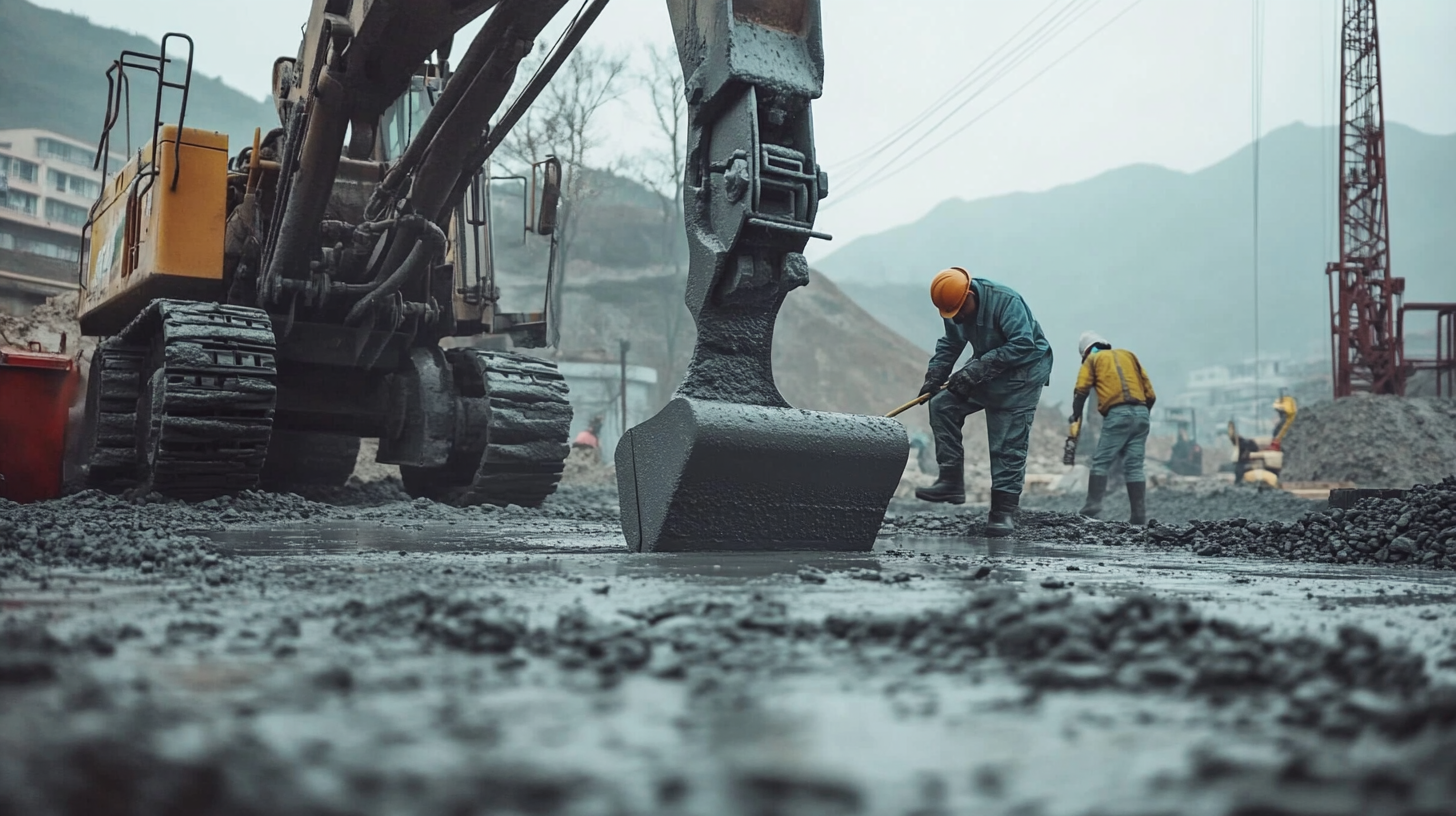China Manufacturing Thrives with Best Concrete Tools Amid US China Tariff Challenges
In recent years, the global manufacturing landscape has faced significant challenges, particularly due to ongoing trade tensions between the United States and China. Despite these hurdles, China has demonstrated remarkable resilience, particularly in the concrete tools sector. As reported by the China Construction Machinery Association, the concrete tools market in China has seen a compound annual growth rate (CAGR) of approximately 8% over the past five years, reflecting a robust demand driven by urbanization and infrastructural development. Even amidst the backdrop of US-China tariff impositions, Chinese manufacturers have leveraged their competitive manufacturing capabilities and innovations to thrive in this segment. This blog will explore how Chinese firms continue to excel and adapt, ensuring that their concrete tools remain at the forefront of the industry, despite geopolitical challenges.

China's Resilience in Manufacturing Amid Tariff Pressures
China's manufacturing sector has demonstrated remarkable resilience in the face of tariff pressures imposed by the US. According to the National Bureau of Statistics of China, the country’s manufacturing output grew by 6.9% year-on-year in 2022, despite the challenges brought by high tariffs on various goods. This growth illustrates the ability of Chinese manufacturers to adapt and innovate, particularly in the production of high-quality concrete tools, which have become a focal point for global construction needs.
The construction tools market is projected to expand significantly, with a report from Mordor Intelligence estimating a compound annual growth rate (CAGR) of 5.1% from 2021 to 2026. China's concrete tools have garnered increasing demand internationally, partly due to the country’s competitive pricing and commitment to quality. Manufacturers are leveraging advanced technologies and sustainable practices to enhance their product offerings, thereby solidifying their positions in the global market even amid the tariff challenges. This adaptability underscores China’s strategic response to trade tensions, positioning its manufacturing sector for sustained growth.
Innovative Concrete Tools Revolutionizing China's Construction Industry
In recent years, China's construction industry has undergone a significant transformation, driven by the introduction of innovative concrete tools that are not only enhancing productivity but also improving safety measures on job sites. According to a report by the China National Building Materials Group Corporation, the market for construction tools, particularly those related to concrete, is projected to reach approximately $15 billion by 2025. This surge is largely attributed to advancements in technology that enable manufacturers to develop tools that are lighter, more durable, and easier to use.
The adoption of smart concrete tools equipped with IoT technology has revolutionized project management and execution in the construction sector. For instance, tools that integrate advanced sensors allow for real-time monitoring of concrete curing processes, which optimizes resource usage and minimizes waste. A study by Statista highlights that the incorporation of such technology could reduce project timelines by up to 20%, translating to significant cost savings for contractors. As China continues to navigate tariff challenges with the U.S., the focus on local innovation and development in concrete tools not only bolsters the domestic market but also equips Chinese businesses to remain competitive on a global scale.

Strategies for Chinese Manufacturers to Overcome Trade Challenges
In the face of US-China trade tariffs, Chinese manufacturers are leveraging innovative strategies to maintain their competitive edge, particularly in the realm of concrete tools. By investing in advanced technology, manufacturers can enhance the quality and durability of their products, ultimately meeting both domestic and international demands. This commitment to excellence not only helps to mitigate the effects of tariffs but also positions these companies as leaders in the construction industry.
Tips for overcoming trade challenges include diversifying the supply chain to reduce reliance on specific markets. By sourcing materials from various suppliers and exploring alternative production locations, manufacturers can create a more resilient operational model. Additionally, fostering strong relationships with customers through transparent communication about product advantages can instill trust and loyalty—even in challenging economic climates.
Another effective strategy is to focus on research and development. By innovating new concrete tools or enhancing existing products, manufacturers can differentiate themselves in a crowded market. Investing in sustainable practices can also appeal to environmentally conscious consumers, setting a company apart from competitors while building a positive brand image. Adapting to these strategies equips manufacturers to thrive despite external pressures while driving the growth of the Chinese manufacturing sector.

The Role of Quality and Technology in China's Concrete Tool Market
China's concrete tool market has witnessed remarkable growth, driven largely by advancements in technology and a commitment to quality. As manufacturers face challenges due to tariffs imposed by the US, the emphasis on innovative designs and durable materials has never been more critical. This market adapts swiftly, integrating cutting-edge technologies such as automation and precision engineering into production processes, ensuring that Chinese concrete tools not only meet international standards but often exceed them.
Moreover, the role of quality cannot be overstated in this competitive landscape. Chinese manufacturers are increasingly focusing on enhancing the durability and efficiency of their products. By implementing strict quality control measures and investing in research and development, they are able to produce tools that are not only effective but also reliable under various working conditions. This commitment to quality has allowed Chinese concrete tools to gain traction in global markets, showcasing the country’s ability to innovate and provide value even in the face of economic challenges like tariffs.
Lessons from China's Manufacturing Success Stories Under US Tariffs
China's manufacturing sector has demonstrated remarkable resilience, even amid the challenges posed by U.S. tariffs. According to a report by the China Manufacturing Industry Association, the country's manufacturing output saw a growth of 5.7% year-on-year in the last quarter, indicating strong demand for products, including concrete tools. Manufacturers have leveraged innovative production techniques and efficient supply chains to mitigate the impact of increased costs associated with tariffs, positioning themselves as competitive players in the global market.
One key lesson from China's success is the emphasis on technology integration and quality improvement. The introduction of advanced concrete mixing technologies has been pivotal; a recent study by the National Bureau of Statistics highlighted that usage of state-of-the-art tools increased production efficiency by 15% in the construction sector. Additionally, manufacturers have focused on enhancing product quality to cater to both domestic and international markets, resulting in a significant uptick in exports. The strategy of adapting to market conditions while investing in innovation has been essential in navigating U.S.-imposed challenges, showcasing a model of adaptability that other nations could learn from.
China Manufacturing Success Amid US Tariffs
This chart illustrates the growth percentage of China's manufacturing sector from 2018 to 2023, showcasing resilience and adaptation in the face of US tariffs.
